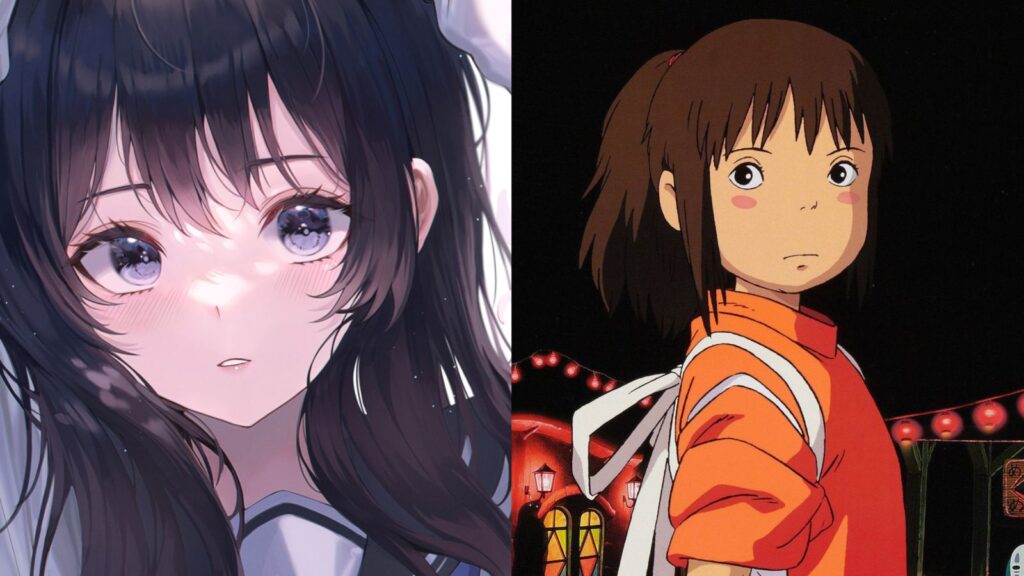
In the world of Japanese animation, Studio Ghibli and anime are often mentioned in the same breath. However, while both share a common heritage, they possess unique characteristics that set them apart. From art style to storytelling and character development, these two mediums offer distinct viewing experiences. Here’s a closer look at what differentiates Studio Ghibli from mainstream anime.
Studio Ghibli’s Artistic Approach
Studio Ghibli is renowned for its hand-drawn animation, featuring soft, warm hues and intricately detailed backgrounds. The studio’s films evoke a sense of nostalgia, immersing viewers in worlds where nature plays a crucial role. The artwork is delicate and painterly, creating a dreamlike atmosphere that enhances the emotional depth of the story.
Anime’s Diverse Aesthetic
In contrast, anime encompasses a broad range of styles, from vibrant, high-energy visuals to sleek, futuristic designs. Many modern anime incorporate CGI elements alongside traditional 2D animation, resulting in dynamic and visually stunning sequences. The art direction often varies depending on the genre, whether it’s the dark and intense aesthetic of Attack on Titan or the neon-lit landscapes of Tokyo Revengers.
Ghibli’s Thematic Focus
Studio Ghibli films often explore universal themes such as love, loss, environmentalism, and self-discovery. The narratives unfold at a gentle pace, emphasizing character growth and emotional resonance. Films like Spirited Away and My Neighbor Totoro create immersive experiences that go beyond conventional storytelling, making the audience feel deeply connected to the characters and their journeys.
Anime’s Expansive Range
Anime, on the other hand, spans a vast spectrum of genres. It can be emotionally profound, as seen in Your Lie in April, or action-packed, like Naruto. Some anime delve into intricate plots with complex character arcs, while others focus on high-stakes battles and supernatural elements. Unlike Ghibli’s subtle, atmospheric storytelling, many anime prioritize fast-paced narratives and dramatic twists.
Ghibli’s Realistic Charm
Characters in Ghibli films are designed with a naturalistic approach, featuring soft expressions and relatable emotions. Even in fantastical settings, the characters remain grounded in reality, making them more emotionally engaging. Protagonists like Chihiro from Spirited Away and Kiki from Kiki’s Delivery Service exemplify this realism through their personal growth and struggles.
Anime’s Bold Expressions
In anime, character designs range from hyper-realistic to exaggerated. Large eyes, dramatic hairstyles, and highly expressive facial features are common traits. This stylistic choice enhances the storytelling by amplifying emotions and creating visually memorable characters. Whether it’s the determined hero in Demon Slayer or the eccentric personalities in One Piece, anime characters are designed to leave a lasting impression.
Ghibli’s Empowering Female Leads
A defining feature of Studio Ghibli is its strong, independent female protagonists. Characters like Nausicaä (Nausicaä of the Valley of the Wind) and Sophie (Howl’s Moving Castle) are central to their stories, displaying resilience, intelligence, and bravery. Ghibli’s portrayal of women has been widely praised for breaking traditional stereotypes and promoting empowerment.
Anime’s Varied Representation
Anime presents a mix of strong female leads and conventional tropes. While some series feature well-developed heroines, others still rely on outdated character archetypes, such as the damsel in distress. However, the landscape is gradually shifting, with modern anime introducing more complex and empowered female characters in response to evolving audience expectations.
Ghibli’s Timeless Craftsmanship
Despite advancements in animation technology, Studio Ghibli remains committed to hand-drawn animation. The meticulous attention to detail and the use of traditional techniques give their films a timeless quality. Each frame is carefully crafted, contributing to the immersive storytelling experience.
Anime’s Digital Innovation
Anime has embraced digital animation, incorporating CGI and other modern techniques to enhance visual effects. Productions like Land of the Lustrous and Attack on Titan utilize computer-generated imagery to create fluid motion and intricate action sequences. This technological evolution allows anime to push the boundaries of animation and storytelling.
Rather than determining which is superior, the distinction between Studio Ghibli and anime lies in their artistic and narrative choices. Ghibli captivates audiences with heartfelt stories and breathtaking animation, while anime offers a dynamic and diverse range of genres and styles. Both mediums hold a unique appeal, ensuring that there is something for every animation enthusiast.